CHARLESTON, S.C. - At the Naval Weapons Station in Goose Creek, S.C., an Army warehouse opened its doors for a few short days.
The facility is 950 feet long and 105 feet wide, contains 393,000 square feet of storage space on six levels, and is capable of housing tanks, wheeled vehicles, generators, weapons, tools, even Meals, Ready to Eat - just about everything needed to supply a brigade-size combat team ordered into action.
And it floats.
"We take Army equipment ... and put it into a warehouse. But our warehouse is unique because they're Navy ships," said Robert O'Brien, Army Strategic Logistics Activity - Charleston general manager. ASLAC is part of the 406th Army Field Support Brigade located in Fort Bragg, N.C.
The Army Prepositioned Stocks program takes Army equipment and places it in strategically located warehouses for use in military contingencies. This reduces the deployment response time for supported units conducting critical contingency operations throughout the world.
APS is the third leg of the strategic mobility triad that includes sealift and airlift, O'Brien said. APS is stored in five general locations worldwide: the continental United States (APS-1), Europe (APS-2), Afloat (APS-3), the Pacific (APS-4), and Southwest Asia (APS-5).
The USNS Pomeroy, a large, medium-speed roll-on/roll-off ship, or LMSR, is part of the APS-3 (Afloat) fleet. The huge vessel docked at the Naval Weapons Station in Charleston Nov. 30-Dec. 4 to offload its cargo. The 1,200 pieces of equipment taken from the ship were then transported seven miles to ASLAC facilities for repair to technical manual 10/20 condition, upgrades, and replacement as needed, O'Brien said.
The Pomeroy is operated by the Military Sealift Command with a crew of about 30 merchant mariners. A contractor team, contracted by the U.S. Army, lives aboard ship to keep the equipment in serviceable condition while the ship remains at sea, O'Brien said.
The empty ship left Charleston for some scheduled maintenance of its own. ASLAC has 109 days to refurbish the equipment before another APS vessel, the USNS Watson, comes into port to receive the cargo, O'Brien said.
The Watson will sail to its station near Diego Garcia in the Indian Ocean or Guam/Saipan in the Pacific Ocean to wait until the equipment is needed or the ship returns to port in 24-30 months.
LMSR is fast, in sealift terms, but it comes at a price, said Mike Finnigan, Pomeroy captain.
A ship like the Pomeroy, going slow, burns about 1,000 barrels of oil a day, and it takes approximately 30 days to go from Korea to Charleston, for example. The same vessel running at full speed can burn 150,000-160,000 barrels a day and make the trip in approximately 20 days.
Until its download at ASLAC, the Pomeroy was the Army's only active prepositioned ship, O'Brien said, although the Army does have two ammunition ships on station. Equipment from the other prepositioned ships was used primarily to support Operation Iraqi Freedom.
The strategic plan for 2015 calls for a total of nine fully loaded LMSR vessels, O'Brien said. The number of ammunition ships will remain the same, he said.
Since the APS equipment fleet has been reduced to one ship, ASLAC does not have the maintenance workload it normally would with a full contingent of prepositioned vessels, O'Brien said. So the 59 government civilians, 9 military members and 300-400 Honeywell Technology contract employees use their logistics expertise for other tasks, such as field-level reset and left-behind equipment missions.
"We've done work for the 82nd, the 101st, 3 ID; we've got some [Heavy Equipment Transports] out there, some big trucks, that are from Fort Hood. We've done a lot of work for other people, again, trying to keep the workforce gainfully employed," O'Brien said, talking about the 82nd Airborne Division, 101st Airborne Division, and the 3rd Infantry Division.
Another challenge is the upcoming Base Realignment and Closure transition coming to the Charleston military community beginning in 2010.
The Charleston area is home to the Charleston Air Force Base, the Naval Weapons Station, and ASLAC. The Army installation covers 350 acres in the middle of the 19,000-acre Naval Weapons Station and has requested another 230 acres for additional storage.
BRAC requires that these and all other tenant organizations realign as a joint base managed by the Air Force.
The ASLAC team constantly works to improve its service to the warfighter, said Paul Turner, director of operations for the Army's APS program in Charleston.
"We want to get the equipment into the hands of the warfighter in 10/20 condition as soon as possible, once the equipment is downloaded [in a contingency]. Anything that we can do back here that facilitates the download and the handoff of the equipment in theater, that's what we want to work towards," Turner said.
ASLAC has implemented improvements to decrease problems associated with handing off equipment to combat units, Turner said. Among them are: placing weapons in racks for easy access, putting MREs into refrigerated containers to prevent spoilage, designing steel storage and transportation frames to store secondary equipment on vehicles and in containers, and using maintenance-free latest technology batteries instead of wet cell batteries for the vehicles.
Other improvements include putting mobile calibration labs onboard ship to calibrate the stock as needed at handoff, and prepositioning radios and communication equipment so the units don't need to supply them.
"The whole point in these efficiencies is to decrease force standup time," Turner said.
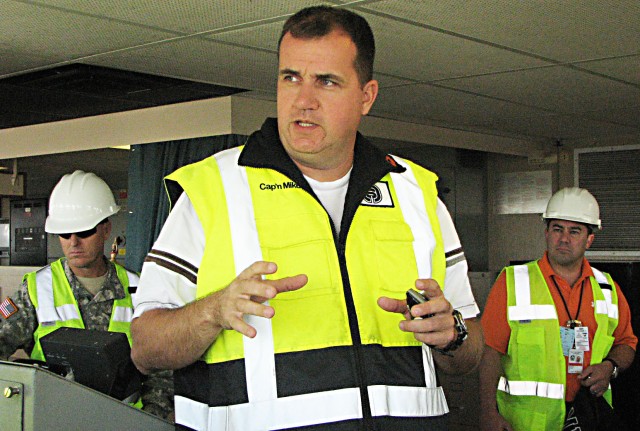
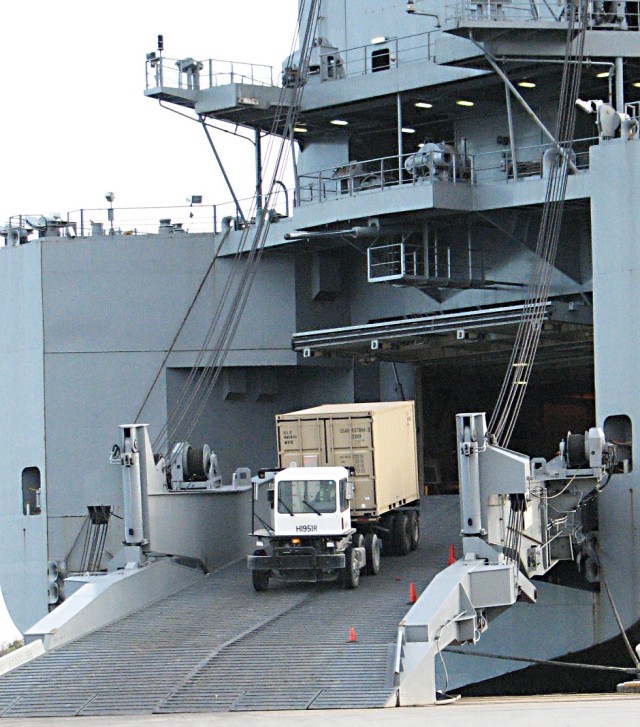

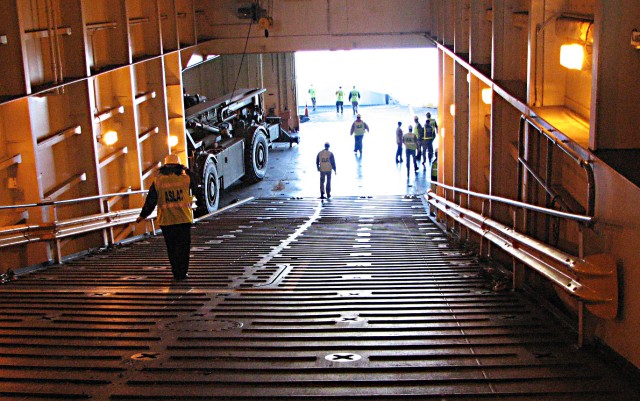
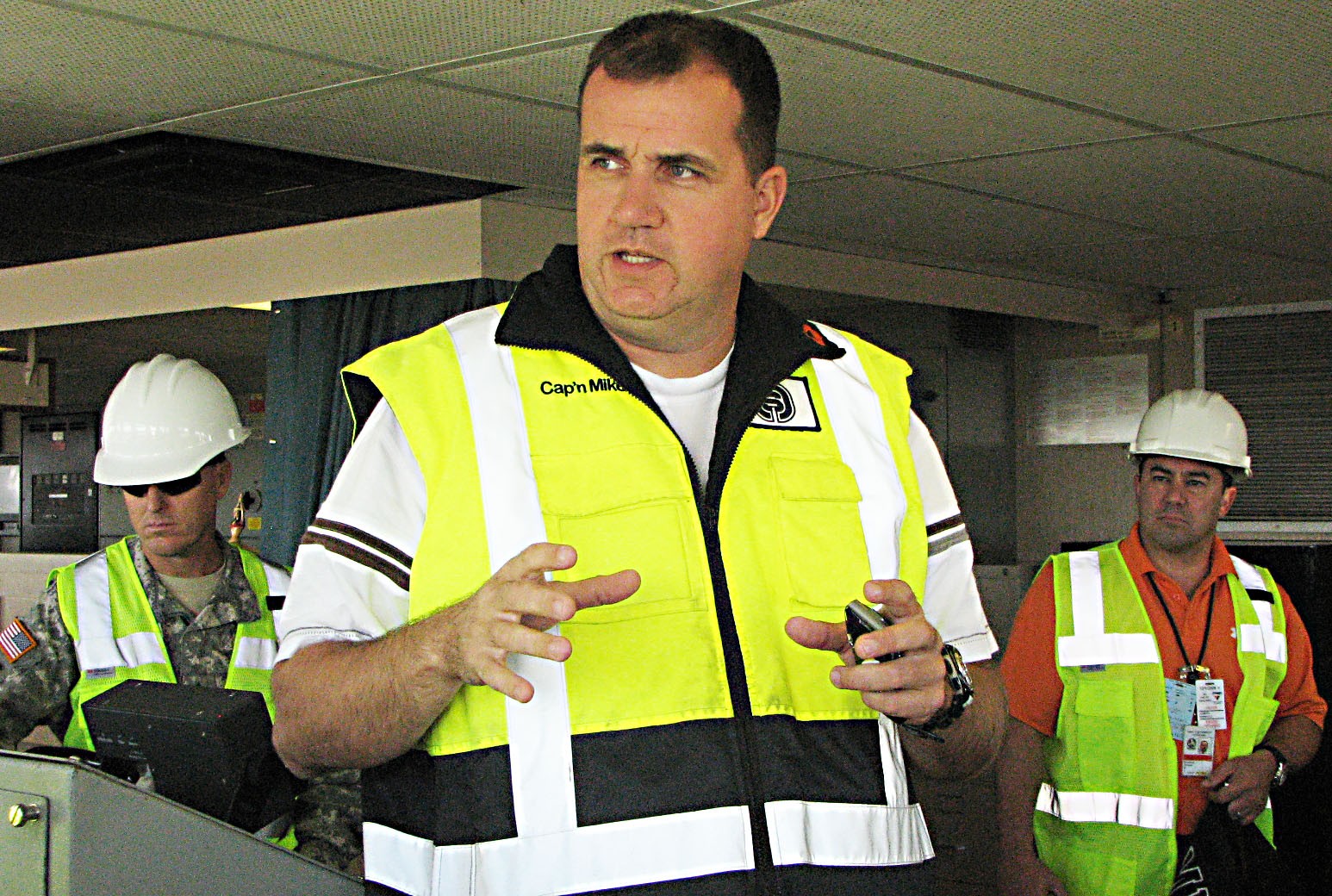
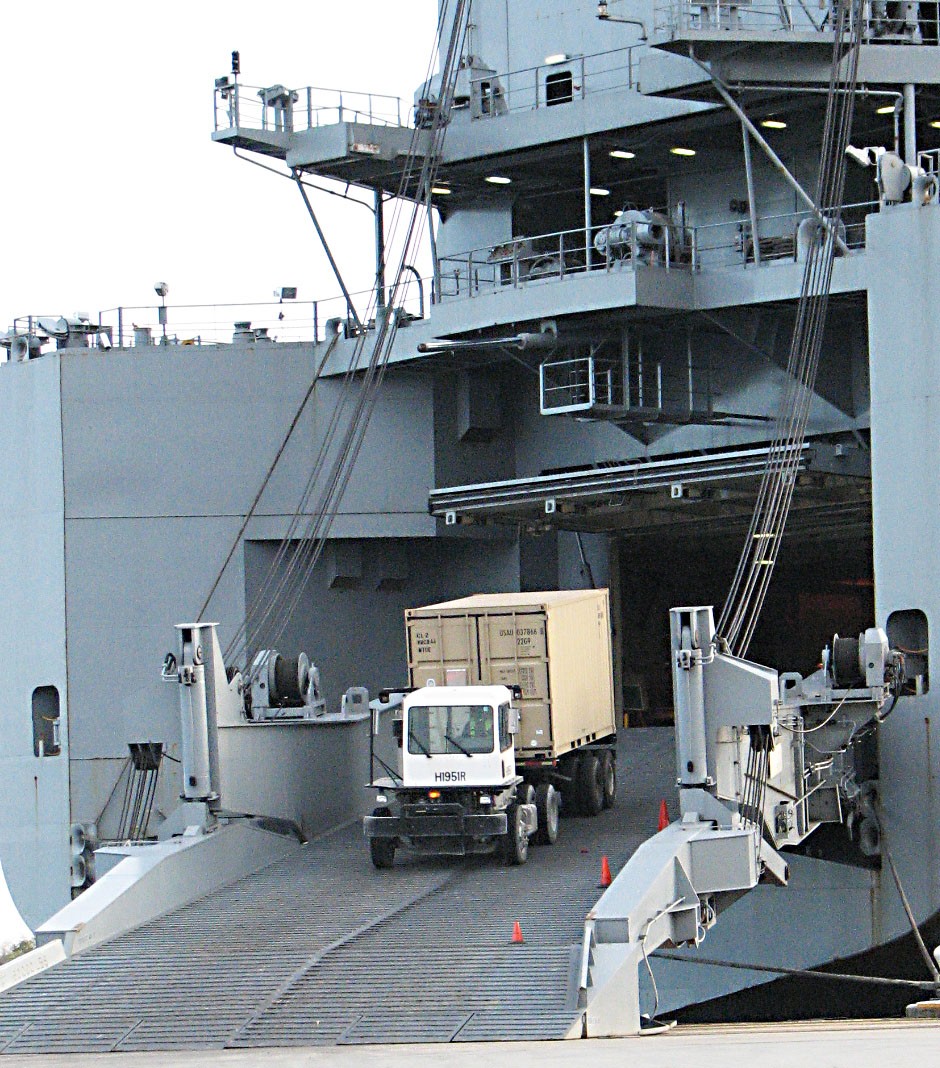
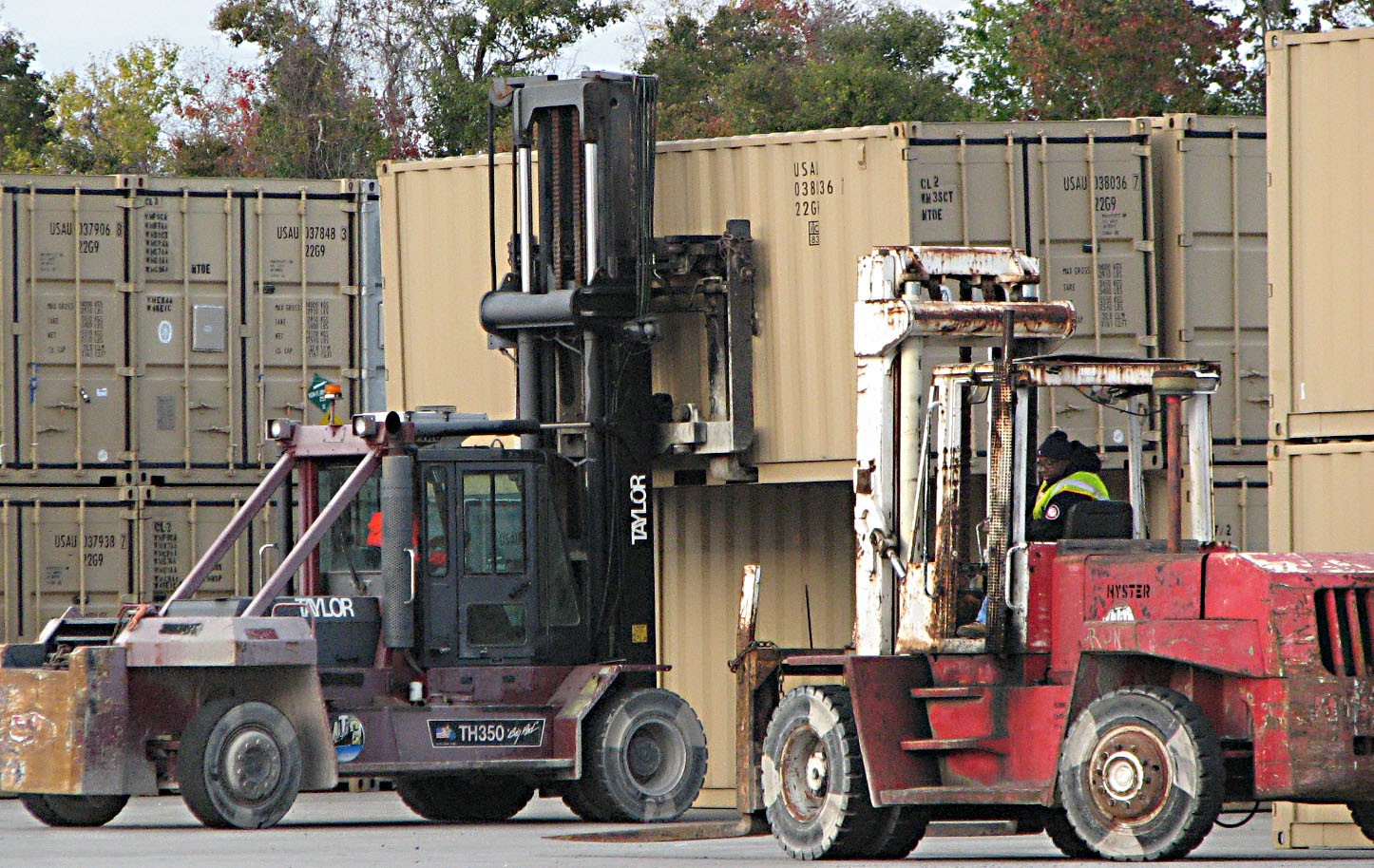
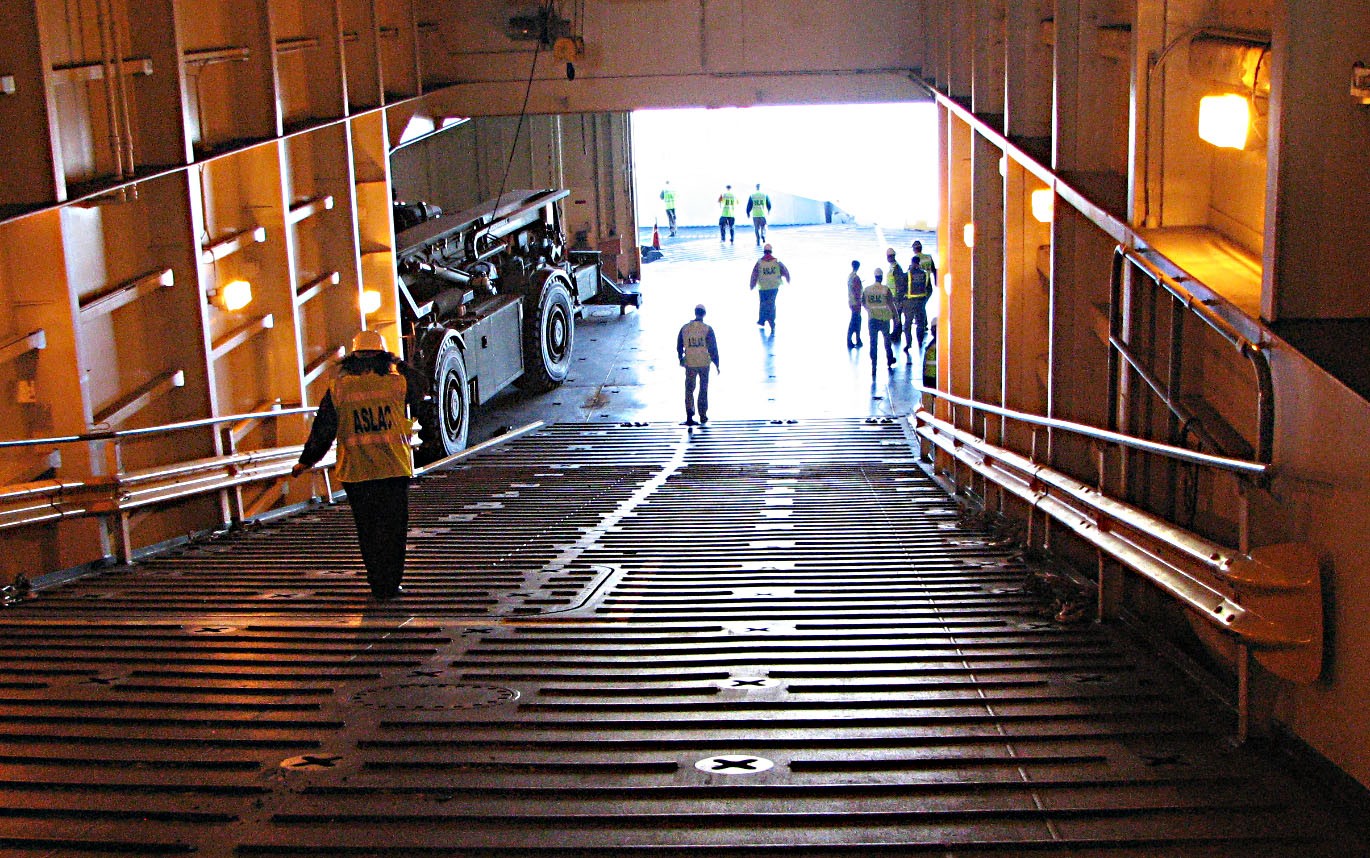
Social Sharing